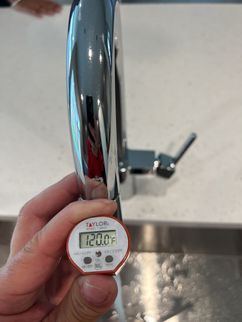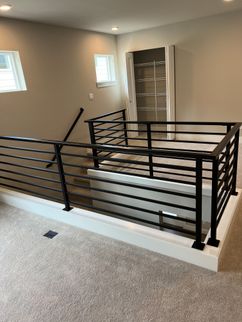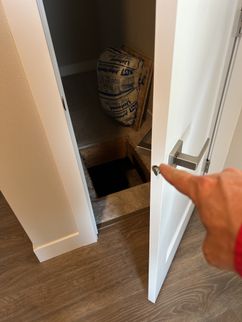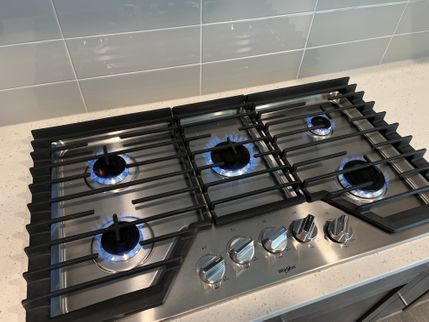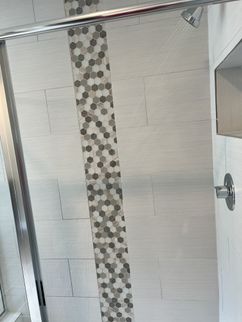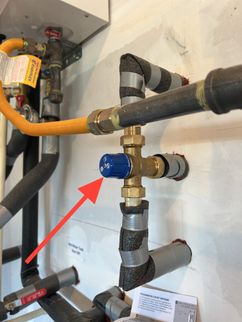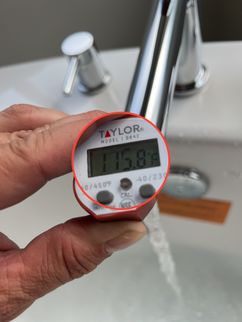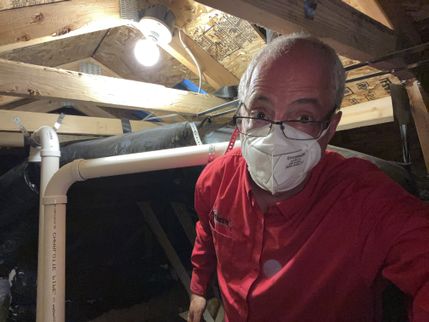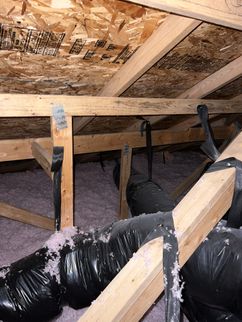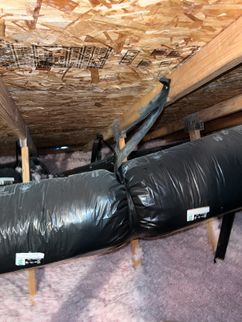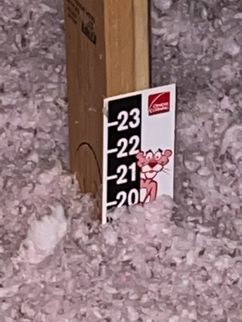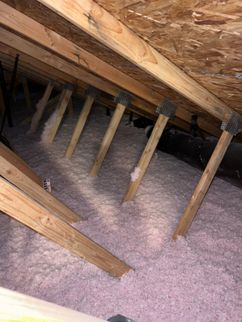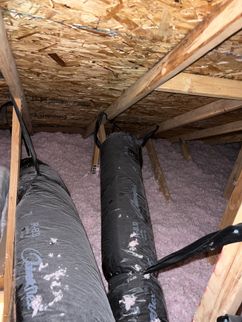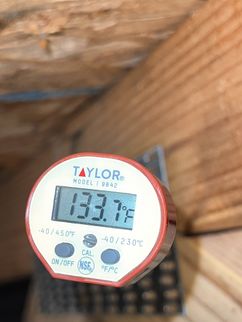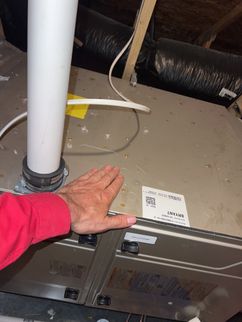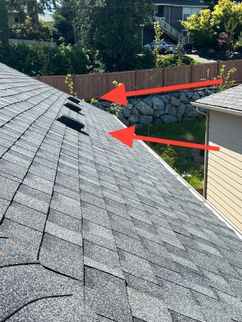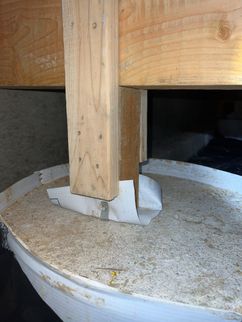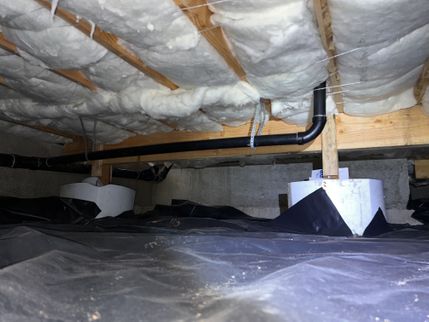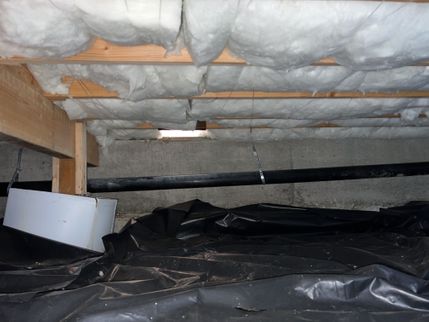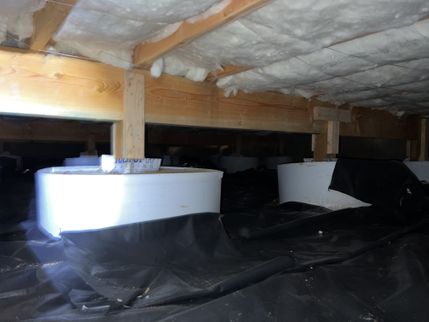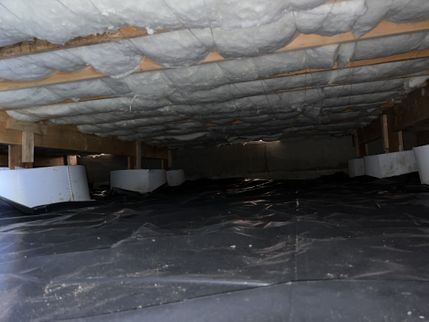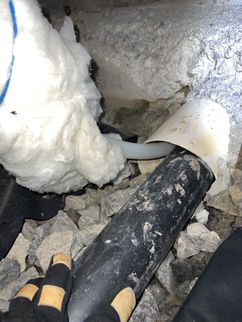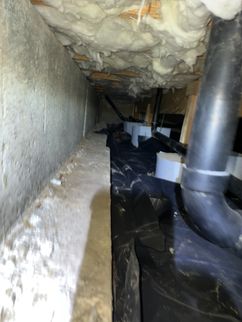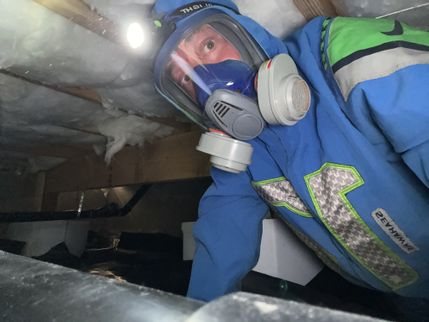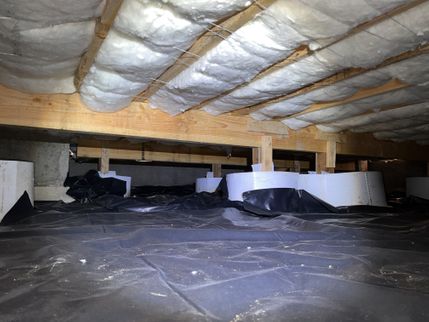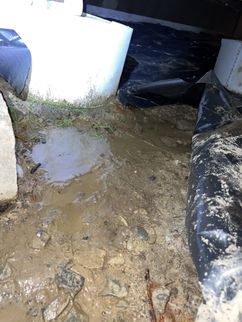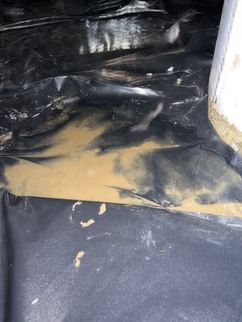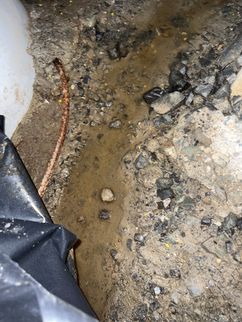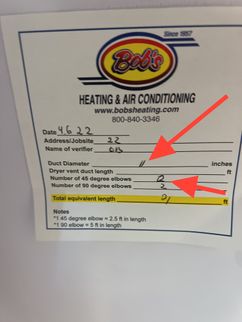The Scope and Purpose of a Home Inspection
Purchasing property involves risk
The purpose of a home inspection is to help reduce the risk associated with the purchase of a structure by providing a professional opinion about the overall condition of the structure. A home inspection is a limited visual inspection and it cannot eliminate this risk. Some homes present more risks than others. We cannot control this, but we try to help educate you about what we don’t know during the inspection process. This is more difficult to convey in a report and one of many reasons why we recommend that you attend the inspection.
A home inspection is not an insurance policy
This report does not substitute for or serve as a warranty or guarantee of any kind. Home warranties can be purchased separately from insuring firms that provide this service.
A home inspection is visual and not destructive
The descriptions and observations in this report are based on a visual inspection of the structure. We inspect the aspects of the structure that can be viewed without dismantling, damaging or disfiguring the structure and without moving furniture and interior furnishings. Areas that are concealed, hidden or inaccessible to view are not covered by this inspection. Some systems cannot be tested during this inspection as testing risks damaging the building. For example, overflow drains on bathtubs are generally not tested because if they were found to be leaking they could damage the finishes below. Our procedures involve non-invasive investigation and non-destructive testing which will limit the scope of the inspection.
This is not an inspection for code compliance
This inspection and report are not intended for city / local code compliance. During the construction process structures are inspected for code compliance by municipal inspectors. Framing is open at this time and conditions can be fully viewed. Framing is not open during inspections of finished homes, and this limits the inspection. All houses fall out of code compliance shortly after they are built, as the codes continually change. National codes are augmented at least every three years for all of the varying disciplines. Municipalities can choose to adopt and phase in sections of the codes on their own timetables. There are generally no requirements to bring older homes into compliance unless substantial renovation is being done.
This is just our opinion
Construction techniques and standards vary. There is no one way to build a house or install a system in a house. The observations in this report are the opinions of the home inspector. Other inspectors and contractors are likely to have some differing opinions. You are welcome to seek opinions from other professionals.
The scope of this inspection
This inspection will include the following systems: exterior, roof, structure, drainage, foundation, attic, interior, plumbing, electrical and heating. The evaluation will be based on limited observations that are primarily visual and non-invasive. This inspection and report are not intended to be technically exhaustive.
Your expectations
The overall goal of a home inspection is to help ensure that your expectations are appropriate with the house you are proposing to buy. To this end we assist with discovery by showing and documenting observations during the home inspection. This should not be mistaken for a technically exhaustive inspection designed to uncover every defect with a building. Such inspections are available but they are generally cost-prohibitive to most homebuyers.
Your participation is requested
Your presence is requested during this inspection. A written report will not substitute for all the possible information that can be conveyed verbally by a shared visual observation of the conditions of the property.
How to Read This Report
Getting the Information to You
This report is designed to deliver important and technical information in a way that is easy for anyone to access and understand. If you are in a hurry, you can take a quick look at our "Summary Page” and quickly get critical information for important decision making. However, we strongly recommend that you take the time to read the full Report, which includes digital photographs, captions, diagrams, descriptions, videos and hot links to additional information.
The best way to get the layers of information that are presented in this report is to read your report online, which will allow you to expand your learning about your house. You will notice some words or series of words highlighted in blue and underlined – clicking on these will provide you with a link to additional information.
This report can also be printed on paper or to a PDF document.
Chapters and Sections
This report is divided into chapters that parcel the home into logical inspection components. Each chapter is broken into sections that relate to a specific system or component of the home. You can navigate between chapters with the click of a button on the left side margin.
Most sections will contain some descriptive information done in black font. Observation narrative, done in colored boxes, will be included if a system or component is found to be significantly deficient in some way or if we wish to provide helpful additional information about the system or the scope of our inspection. If a system or component of the home was deemed to be in satisfactory or serviceable condition, there may be no narrative observation comments in that section and it may simply say “tested,” or “inspected.”
Observation Labels
All narrative observations are colored, numbered and labeled to help you find, refer to, and understand the severity of the observation. Observation colors and labels used in this report are:
- Concern:Urgent repair items that should be addressed now to prevent further issues or inherent safety hazards. This category includes items requiring immediate attention to prevent additional damage to the structure, or to eliminate safety hazards.
- Repair:Repair and urgent maintenance items noted during inspection. Please note that some repair items can be quite expensive to correct. Items identified in this category should be dealt with in a timely manner (less than 6 months) or they will likely turn into items of concern.
- Maintenance:These are routine items that are less urgent than repairs, and also don't pose an immediate safety risk. Maintenance items that get ignored WILL turn into items of repair or concern... Maintenance items should be addressed within the next 12-24 months.
- Due Diligence:Observations on items that are outside the scope of a general home inspection and require further investigation on your part to determine the severity and/or urgency of potential issues.
- Upgrade:Observations that are not necessarily defects (may be grandfathered), but which could be improved for safety, efficiency, or reliability reasons.
- Monitor:Items that do not currently appear to require action, but should be watched to see if action may be needed in the future.
- Informational:Detailed description of various aspects of the property noted during the inspection. Generally good stuff to know.
Summary Page
The Summary Page is designed as a bulleted overview of all the observations noted during inspection. This helpful overview is not a substitution for reading the entire inspection report. The entire report must be read to get a complete understanding of this inspection report as the Summary Page does not include photographs or photo captions.
Summary
Concerns
- AB-2 All Bathrooms:
This comment is a safety advisory... Be advised that this home has a tempering valve installed for filling the soaking tub that isn’t properly set. Be sure to adjust the valve to mix the water appropriately while filling so you do not run a bath too hot. Soaking tubs should be at a temperature of approximately 104° or less, otherwise there is an overheating risk that can prove fatal to some people (same as with hot tubs or jetted tubs).
- A-6 Attic:
The attic and roof cavity ventilation appears to be non-standard. Standards today recommend open ventilation levels in a ratio of 1 to 150 of the attic area. Proper roof cavity ventilation is important to keep the attic space cool and dry. I recommend having a qualified general contractor evaluate the level of ventilation on this roof and improve with ridge, soffit, core or other vents as needed. Proper attic ventilation is important for the roofing materials to perform as intended and to reduce chances for condensation problems and heat build-up in the attic. The attic temp was measured at 40° above ambient temperature. Also, there was very little airflow through the access hatch as I entered the attic, indicating a lack of proper ventilation.
- CS-3 Crawl Space:
The crawl space was mostly dry at the time of inspection but I did note standing water below the plastic vapor barrier at the west end under the living room and kitchen areas (it hasn't rained in a week). Proper drainage should be implemented to avoid pooling water. The plastic vapor barrier should never be floating on water. The eastern portion of the crawlspace has proper drain rock installed, and no moisture accumulation. I recommend installing the same drainage for the western portion, and then re-inspecting this space for water during the rainy season to see how this new building performs.
Repairs
- ESDW-5 Exterior Siding, Doors and Windows:
Flashing missing from trim at rear... all missing flashings should be installed.
- G1-1 Garage:
An unprotected opening was found in the garage ceiling finishes. This should be repaired to complete the fire separation between the house and the garage. Large holes should be repaired with the proper sheetrock materials. Small holes and openings should be sealed with mud or "fire stop" caulking/foam. Openings with doors should employ listed fire-rated doors.
- G1-2 Garage:
The overhead garage door opener does not reverse under resistance to closing. Adjustment of the sensitivity is recommended for improved safety. This typically involves adjusting a small plastic screw on the opener. Just Google the make and model number of this garage door opener to find instructions for setting the sensitivity. Typically, it should be set to return at 15 pounds of resistance.
- ES-4 Electric Service:
Service conductors are missing the covers.
- P-4 Plumbing:
The static water pressure in the home tested above 80-psi (pounds per square inch), the maximum water pressure recommended. High water pressure can stress the supply plumbing system, as well as all of the fixtures, and make leaks more likely. A pressure reducing valve was noted on the main water inlet suggesting that it may require adjustment or replacement. I recommend having this condition further evaluated and adjusted or repaired as recommended by a licensed plumbing contractor.
- I-2 Interior:
The interior door to the entry closet is not latching correctly and requires adjustment so the door latches closed.
- K-2 Kitchen:
Burning off the new oven is recommended to eliminate smoking and odor during operation. New ovens will always produce acrid smoke during the first use. Running for several hours prior to use and ventilating the space and help get this new appliance ready for daily use.
- LF-1 Laundry Facilities:
Have the builder verify the duct length so that you have a baseline for future maintenance. The sticker at the dryer vent does not appear to be filled out properly.
Maintenance Items
- P-9 Plumbing:
This building has hot water provided by a tankless water heater. Periodic flushing is recommended for these types of water heaters to prevent scaling and mineral build-up. Flushing is typically done using the flush kit to push vinegar through the heat exchangers. I recommend keeping this water heater on a regular service schedule. The frequency of servicing depends on the quality of the water being heated and frequency of use, so it is difficult to make a blanket recommendation. I would suggest servicing every 3-5 years to be a reasonable schedule. Consult the manufacturer's website to determine their suggested maintenance schedule.
Due Diligence Items
- GC-1 General Comments:
As this is a newer construction building, there is a chance that building plans, permits, drainage plans, construction records, a list of sub-contractors and warranty information may be available. I recommend trying to obtain and keep this information for your records and for future re-sale.
- G-1 Grounds:
While there was no appearance of any obvious issues/concerns with the stone retaining walls on this property, I am neither licensed nor trained to make such a statement. If you have any concerns at all about the retaining walls, you should retain the services of a professional engineer to obtain a reliable opinion. Analysis and evaluation of retaining walls is outside the scope of a home inspection and hereby explicitly excluded from this report. Any comments provided herein are provided as a courtesy only.
- RCG-3 Roof, Chimney and Gutters:
The roofing material on this building is a recently installed architectural grade asphalt shingle. These are often rated as 30-40 year shingles. In practice, as a roof assembly, these tend to last about 25-30 years depending on the quality of the installation, the steepness of the roof, routine maintenance, and the exposure. The installation appears neat and professional. Many professional roofing companies will offer limited workmanship warranties. Please note that roof systems are not just the shingle, they are an assembly and they require regular cleaning and maintenance to keep them performing reliably.
Recommendation
Inquire with the builder about any warranty and/or installer information for this new roof covering installation.
- ES-3 Electric Service:
This house has a surge protector installed to protect the electrical system. Inquire with the seller for more information about which circuits are protected or if the whole panel is protected. Please note that the 2020 edition of the National Electrical Code requires type 1 or type 2 surge protection on new or renovated houses. This code change reflects the growing complexity of our electrical appliances and the risk of damage to these appliances from service provider surges.
- EDFW-4 Electric Distribution and Finish Wiring:
Carbon monoxide alarms were found and noted during inspection. Be sure to check these regularly. The standard is 1/ floor and 1 outside all sleeping areas.
- EDFW-7 Electric Distribution and Finish Wiring:
The inspector documented that the building is served by a communications utility. You will need to contact the service provider directly to determine the speeds available and whether or not the building is wired for distribution. Evaluation of low voltage wiring is beyond the scope of this inspection. Inspector noted signs of coaxial cable installed to the home.
- EDFW-8 Electric Distribution and Finish Wiring:
A "smart box" low-voltage wiring panel was noted in the main bedroom closet. This is designed to house the low voltage CATV and phone wires. Home owners will often use these to create in house networks for internet and communication devices and may locate internet routers here. Inspection of low voltage wiring and communication wiring is beyond the scope of this inspection. Inquire with the seller for any additional information.
- P-7 Plumbing:
A video camera sewer scope is recommended. An evaluation of the sewer line below the ground is beyond the scope of this inspection. Regardless of the age of the building, a sewer scope is always recommended to evaluate the buried plumbing connections between the house and the municipal sewer main. As a homeowner, you are usually responsible for the entire length from the house to the connection with the main (some cities take over at the property line; most do not). Sewer scopes are performed using video cameras and can reveal the materials, condition and reliability of the sewer line. I strongly suggest having a sewer scope performed as part of your due diligence. Defects have been found in brand new pipes as well as older lines.
- K-1 Kitchen:
Inquire with the seller about appropriate products and directions for sealing and caring for your slab stone or engineered stone countertops. It is common to use sealers to seal the stone and other products to protect them from stains. Citric acids and oils can stain these countertops.
- AB-1 All Bathrooms:
Inquire with the builder about recommended tile maintenance. Unless epoxy grout has been used, tile grout should typically be cleaned and sealed annually.
Upgrade Items
- FSD-1 Fuel Storage and Distribution:
Consider improving the safety of the gas meter connection with a Northridge Valve. These are seismic protection that can automatically shut off the gas in the event of an earthquake.
In the meantime, you will want to familiarize yourself with the location and operation of this shutoff valve. In case of a seismic event it would be prudent to close this valve to avoid the possibility of a natural gas explosion in your home. The proper operation of this valve requires the use of a tool. Some people attach a wrench to the pipe near the valve so that they don't have to look for one in an emergency. Inspector suggests attaching a simple box end wrench or purpose built tool of the appropriate size.
- RCG-4 Roof, Chimney and Gutters:
Several of the downspouts on the upper gutter system are terminating onto the lower roof. This is industry standard practice but it will prematurely deteriorate the roofing shingles in these locations and it is not recommended by many shingle manufacturers. I recommend extending the downspouts into lower gutters to better protect the roof.
- AB-3 All Bathrooms:
Inspector ALWAYS suggests installing a timer switch for bath fans so they run for an extended time after immediate use. Proper moisture control requires the fan to be operating at least 30 minutes after you have vacated the space. Alternatively, you can replace the simple switch with a humidistat controlled switch that makes this operation automatic.
Items To Monitor
- ESDW-4 Exterior Siding, Doors and Windows:
This house is trimmed with a softwood spruce trim. This wood is not especially resistant to wood decay. I would monitor the sun-exposed sides of the building. Try and keep the wood well-caulked and painted. Over time, expect the need for localized rot repair with this wood.
- HCFV-3 Heating, Cooling, Fireplaces and Ventilation:
The furnace has a, "hockey puck," moisture alarm in the pan. This is designed to warn the occupants should a leak occur in the furnace condensate system. This is good to know about. If you hear the alarm sound or if the furnace shuts off, you will need to silence the alarm and check the HVAC system.
- I-1 Interior:
The guardrails have a horizontal railing system. While this is now an allowed style, it can be an attractive nuisance for children as it can create a ladder effect. Use caution if small children are in the building.
📃 Your Optimized Inspection Report
Exterior Siding, Doors and Windows
Exterior Elevations
Siding and Trim
Exterior Vent and Exhaust Terminations
Eaves
Exterior Doors
Exterior Window Frames
Electric Service
Electric Service Permits Found
Electric Service
Electric Service Equipment
Appliance Disconnects
Electrical Grounding System
Electrical Bonding System
Electric Distribution and Finish Wiring
Branch Wiring
Receptacles and Fixtures
Smoke and Carbon Monoxide Alarm Systems
Low Voltage Wiring
Heating, Cooling, Fireplaces and Ventilation
Heating System
Air Filters
Heating and Cooling Distribution Systems
Mechanical Ventilation Systems
Additional Heat Sources
Plumbing
Water Meter
Water Service Supply
Distribution Pipe
Waste Pipe and Discharge
Water Heater
Water Temperature
Exterior Hose Bibs
Interior
Floors and Floor Materials
Walls, Ceilings, Trim, Hallways and Closets
Stairs and Railings
Interior Doors
Windows
Kitchen
Sinks and Faucets
Cabinets and Countertops
Disposers
Dishwasher
Ventilation Method
Ranges, Ovens and Cooktops
Refrigerators
All Bathrooms
Sinks and Cabinets
Toilets
Bathtubs & Showers
Spa Tub
Bathroom Ventilation
General Bath Condition
Attic
Attic Access
Roof Framing and Sheathing
Attic Insulation
Attic Fan Exhaust Vents
Attic and Roof Cavity Ventilation
General Comments
Building Characteristics, Conditions and Limitations
Type of Building : Single Family (2-story)
Approximate Square Footage: 2600
Approximate Year of Original Construction: 2022, New Construction
Attending the Inspection: Buyer's Agent
Occupancy: Unoccupied
Weather during the inspection: Sunny
Approximate temperature during the inspection: Over 85[F]
Ground/Soil surface conditions: Dry
For the Purposes of This Report, the Front Door Faces: East
As this is a newer construction building, there is a chance that building plans, permits, drainage plans, construction records, a list of sub-contractors and warranty information may be available. I recommend trying to obtain and keep this information for your records and for future re-sale.
This house was vacant / unoccupied at the time of inspection. Some houses present risks beyond what we are able to discover during a visual inspection. Vacant houses are just such houses as the plumbing and wiring systems, as well as the appliances, have not been tested under real-life conditions for a long time. While some of these systems may have been working at the time of the inspection, it is difficult to know how they will respond to regular use and they should be considered unreliable at best. A home inspection verifies basic functionality in short bursts of time, rather than full functionality over extended periods. For example, septic systems may initially function during the inspection and then fail under a live load (multiple people/days of use, etc...). Plumbing traps may operate with no signs of leaks in the moment and then let go when being actively used for a few days. Seals dry up and leak. Sewer/Septic lines with roots may allow water to flow during the inspection, but then fail when solids and tissue are flushed [Insert note about the importance of getting a sewer scope inspection here]. It takes a few weeks of full normal usage to be able to ascertain the baseline for a homes systems.
Grounds
Drainage and Site
Clearance to Grade: Standard
Downspout Discharge: Below grade
Site Description: Flat
Driveways/Walkways/Flatwork
Driveway: Concrete
Walkways: Concrete
Patios: Concrete
Window and Stairwells
None Noted
Retaining Walls
Retaining Wall Material: Concrete, Stone
While there was no appearance of any obvious issues/concerns with the stone retaining walls on this property, I am neither licensed nor trained to make such a statement. If you have any concerns at all about the retaining walls, you should retain the services of a professional engineer to obtain a reliable opinion. Analysis and evaluation of retaining walls is outside the scope of a home inspection and hereby explicitly excluded from this report. Any comments provided herein are provided as a courtesy only.
Exterior Siding, Doors and Windows
Siding and Trim
Primary Siding Material: HardiePlank, Manufactured Stone Veneer
Trim Material: Wood (Spruce Trim Note)
HardiePlank Siding
HardiePlank siding is a fiber-cement type siding that consists of fibrous materials with a cement component and silica sand/fibers that are compressed together with interior resins that have an embossed outside textured or smooth appearance. HardiePlank contains no asbestos, fiberglass or formaldehyde. This material is a relatively newly engineered product. It has no long term track record to match the 30 year warranty that comes with it, but it has received good reviews in the trades regarding it's stability and durability if properly applied and maintained. It has also become a very popular siding alternative to wood siding due to its durability, price and low maintenance characteristics.
There are some specific requirements for installation and protection. HardiePlank can be blind-nailed or face nailed at the builders discretion but is recommended to be face nailed in high wind areas. HardiePlank cannot be blind nailed with 24" oc framing. Nails should be corrosion resistant and caulked, and double nailed if a penetration of the siding skin occurs while nailing. Butt ends of material should be in moderate contact with minimal gapping and are currently not recommended to be caulked. Previously, up until Oct 2008, the butt joints were recommended to be either butted together or gapped a maximum of 1/8” and caulked. Currently the joints should have “joint flashing” behind, which can consist of a number of different materials such as Mylar, felt, metal or strip/gap backing. At this time Hardie does not specify what the joint backing material requirements are. All window, door and trim connections should be caulked as with standard building practice. It can be hand nailed or compressor nailed, but staples should not be used. Full installation instructions are noted with a link below.
Penetrations such as hose bibs and holes 1 1⁄2” or larger, such as dryer vents, furnace vents, electrical and light fixture boxes should have a flashed block of trim around point of penetration. Smaller piping does not require blocking but should be well caulked.
HardiePlank and HardiePanel need to be kept painted. This is a fiber cement material that is porous and will absorb moisture if not kept sealed, which can cause flaking, mold and deterioration. Any caulking, primer or paint used is required to be 100% latex acrylic material. HardiePlank should not be stained.
There have been numerous difficulties with different types of applied products that are engineered, such as Louisiana-Pacific siding, Masonite Omni-Board, pressboard panel type siding as opposed to natural materials such as cedar siding. HardiePlank siding, having limited long term history, is difficult to comment on in regard to its expected life span and aging characteristics, but has been faring very well in comparison.
HardiePlank siding does have a “30-Year Limited Transferable Warranty”, but "transferable", as stated in the fine print of this materials contract, includes transference only from the original material buyer, meaning the builder, to the first purchaser and then to the second purchaser. Subsequent buyers/owners are not covered by this warranty. Calling this a 30-year transferable warranty seems optimistic since upon sale of the structure to a third buyer and beyond, there is no warranty protection. Few structures are owned for 30 years by just two individuals.
Further information:
James Hardie Building Products at 1-800-426-4051 - www.jameshardie.com
HardiePlank installation instructions http://www.jameshardie.com/d2w/installation/hardieplank-hz10-us-en.pdf
Hardie Best Practices https://www.jameshardiepros.com/Install-and-Tech-Docs/BrowseTechDocs?doctype=Best%20Practice%20Guide
Parts of the exterior siding system here are done using manufactured stone veneer. This is a cement-based product that is manufactured to look like natural stone. It is often used as a decorative detail on the exterior of residential construction and it is occasionally used as an extensive part of the exterior siding system. As a general guide to understanding this product, it should be installed in a fashion similar to hard-coat stucco. One critical aspect of the installation that is concealed once the installation is complete is that two layers of underlayment should be used beneath this product.
During inspection, we look for installation issues that are not consistent with the installation details provided by the manufacturer. There are many different manufacturer's of this stone and they all seem to use a common installation guide from the MVMA - The Masonry Veneer Manufacturers Association. It is fairly common to find installation techniques that are not consistent with this guide. There seems to be a general lag in the industry to get installers to use this guide.
In general, concerns over installation should be in proportion to the amount of MSV that has been used and the amount of exposure. Those sections that are exposed to the weather will require careful detailing for reliable moisture control. Please see any observations in the report below regarding any specific findings here today.
This link will also get you to a series of blogs with some additional information about MSV.
Exterior Vent and Exhaust Terminations
Present
Eaves
Open rafters, OSB
Exterior Doors
Exterior Door Styles: Glass panel doors, Sliding glass
Exterior Window Frames
Window Frames: Vinyl
Fuel Storage and Distribution
Gas Meter
Gas Shutoff Location: South side of structure
Consider improving the safety of the gas meter connection with a Northridge Valve. These are seismic protection that can automatically shut off the gas in the event of an earthquake.
In the meantime, you will want to familiarize yourself with the location and operation of this shutoff valve. In case of a seismic event it would be prudent to close this valve to avoid the possibility of a natural gas explosion in your home. The proper operation of this valve requires the use of a tool. Some people attach a wrench to the pipe near the valve so that they don't have to look for one in an emergency. Inspector suggests attaching a simple box end wrench or purpose built tool of the appropriate size.
Gas, Propane and Oil Piping
Gas Piping Materials Noted: Steel
Roof, Chimney and Gutters
Roof Materials
Method of Roof Inspection: Viewed ladder at eaves
Roof Style: Hip
Flashings, Valleys and Penetrations: Present and Visually Standard, California Cut Valley
Roof Covering Materials: Architectural grade composition shingle
Approximate Age of Roof Covering: New
Overlay Roof: No
The roofing material on this building is a recently installed architectural grade asphalt shingle. These are often rated as 30-40 year shingles. In practice, as a roof assembly, these tend to last about 25-30 years depending on the quality of the installation, the steepness of the roof, routine maintenance, and the exposure. The installation appears neat and professional. Many professional roofing companies will offer limited workmanship warranties. Please note that roof systems are not just the shingle, they are an assembly and they require regular cleaning and maintenance to keep them performing reliably.
Recommendation
Inquire with the builder about any warranty and/or installer information for this new roof covering installation.
Roof flashings are used to keep a roofing system waterproof where the roofing material starts, stops, changes direction or is penetrated. During inspection, we look for standard flashing techniques that could be considered normal or standard in our region. Damaged, incomplete or non-standard flashings can be a sign of an older or less reliable roofing system and may require repair. Any non-standard flashings noted during inspection will be reported on below if found.
This building has a cut valley detail for the roofing valleys. These generally perform adequately, though some roofers and some shingle manufacturers do not recommend this type of valley detail. They are so common here, I do not consider them defective or in need of repair unless there is visible evidence that a repair is needed at the time or they are showing excessive wear. Generally, valleys done with metal flashing systems are more reliable.
Gutters and Downspouts
Gutter and Downspout Materials: Aluminum
Several of the downspouts on the upper gutter system are terminating onto the lower roof. This is industry standard practice but it will prematurely deteriorate the roofing shingles in these locations and it is not recommended by many shingle manufacturers. I recommend extending the downspouts into lower gutters to better protect the roof.
Garage
Garage General
Garage Type: Tuck Under, Attached
An unprotected opening was found in the garage ceiling finishes. This should be repaired to complete the fire separation between the house and the garage. Large holes should be repaired with the proper sheetrock materials. Small holes and openings should be sealed with mud or "fire stop" caulking/foam. Openings with doors should employ listed fire-rated doors.
Garage Doors and Automatic Openers
Overhead Garage Door Type: Metal
Automatic Garage Opener: Present, Sensitivity (Inadequate - 1 Door)
Door To Living Space: Solid Wood
The overhead garage door opener does not reverse under resistance to closing. Adjustment of the sensitivity is recommended for improved safety. This typically involves adjusting a small plastic screw on the opener. Just Google the make and model number of this garage door opener to find instructions for setting the sensitivity. Typically, it should be set to return at 15 pounds of resistance.
Garage Floor
Garage Slab: Concrete
Garage Stairs
Garage Stairs: Standard
Electric Service
Electric Service
Service Entrance: Below Ground
Apparent Meter Base Amperage: 200
Electric Service Equipment
Service Entrance conductor Size: Aluminum, 4/0, 200 amps
Main Panel Approved Amperage: 200 amps
Main Electric Panel Location: Garage
Panel Manufacturer: Square D
This house has a surge protector installed to protect the electrical system. Inquire with the seller for more information about which circuits are protected or if the whole panel is protected. Please note that the 2020 edition of the National Electrical Code requires type 1 or type 2 surge protection on new or renovated houses. This code change reflects the growing complexity of our electrical appliances and the risk of damage to these appliances from service provider surges.
There has recently been a recall of some Square D service panels with manufacturing dates between 200561 and 220233. This link will take you to the CPSC website explaining the risk. The proper datecode can only be found on the inside of the panel next to the main breaker. The Inspector noted that your panel isn\'t affected by the recall. No further action appears required.
Appliance Disconnects
Disconnects Noted: Air Conditioner
Electrical Grounding System
UFER Ground Noted
Electrical Bonding System
Inter-bonding Terminal Noted, Bonding Noted on Gas Pipes
Electric Distribution and Finish Wiring
Branch Wiring
Wire Material: Copper
Wiring System Components: Non-metallic sheathed cable
Receptacles and Fixtures
Inspection Method: Representative Testing
Electric Receptacles: Three wire receptacles
A representative number of receptacles and switches were tested during inspection. Any defects found during inspection are noted in this report. Only visible and accessible receptacles and switches were tested during inspection and personal items and furnishings are not moved to access any receptacles or fixtures.
Please note that the GFCI reset for the exterior circuits are located in the garage.
Smoke and Carbon Monoxide Alarm Systems
CO Alarms: Present
Smoke Alarms: Present
Carbon monoxide alarms were found and noted during inspection. Be sure to check these regularly. The standard is 1/ floor and 1 outside all sleeping areas.
The installation of carbon monoxide alarms is recommended for all homes that have fuel burning appliances such as gas or oil furnaces, gas water heaters, gas ovens and cook-tops, gas fireplaces and wood stoves. In addition, Washington State law (WAC 51-51-0315) now requires UL 2034 approved carbon monoxide alarms in ALL homes and condominiums being sold in Washington State. The location should be: at least one alarm outside of all sleeping areas and one on each floor of the house. Best practices are to have these alarms hardwired with a battery back-up - though requirements are for the installation to meet manufacturer's specifications. Carbon monoxide is a colorless, odorless gas that can cause sickness, nausea and even death. Alarms have a useful service life of roughly 6 years, so changing them more frequently than smoke alarms is recommended.
During the home inspection, I test a representative sample of the smoke alarms by using the test button on the alarms. This is NOT an accurate test of the sensor, merely a test to see if the unit is currently powered. For reliability, fire marshals recommended replacing smoke alarms every 10 years (min) and changing batteries bi-annually. The latest data indicate that we should be using photoelectric technology in our smoke alarms for improved fire detection and to reduce problems with false alarms which can lead to disabling of this important safety system. Unfortunately, the alarms have to be removed to determine if they are photo-electric or ionization types. It is surprisingly complex to accurately test a smoke alarm system and determine the reliability, age, and type of sensor technology used, especially as many homes can have half a dozen or more alarms throughout the house. A complete evaluation of smoke alarms is beyond the scope of this inspection. For optimal fire safety, I recommend taking control of these important safety devices and learning about how to service and maintain your smoke alarm system to keep the building occupants safe. For more information, please read this link.
Low Voltage Wiring
The inspector documented that the building is served by a communications utility. You will need to contact the service provider directly to determine the speeds available and whether or not the building is wired for distribution. Evaluation of low voltage wiring is beyond the scope of this inspection. Inspector noted signs of coaxial cable installed to the home.
A "smart box" low-voltage wiring panel was noted in the main bedroom closet. This is designed to house the low voltage CATV and phone wires. Home owners will often use these to create in house networks for internet and communication devices and may locate internet routers here. Inspection of low voltage wiring and communication wiring is beyond the scope of this inspection. Inquire with the seller for any additional information.
Heating, Cooling, Fireplaces and Ventilation
Heating System
Energy Source: Natural gas
Heating Method: Gas forced air furnace
Manufacturer: Bryant
Data Plate: Shown Here
Capacity: 80,000 btus
Age: New
The furnace has a, "hockey puck," moisture alarm in the pan. This is designed to warn the occupants should a leak occur in the furnace condensate system. This is good to know about. If you hear the alarm sound or if the furnace shuts off, you will need to silence the alarm and check the HVAC system.
This house has a gas forced air furnace. A critical component to all combustion heating equipment is the heat exchanger. This is the welded metal assembly inside the furnace that contains the products of combustion so that moisture, carbon monoxide and other products of combustion do not mix with interior air and get safely vented to the exterior. Heat exchangers on modern furnaces have an average life expectancy of 15-20 years. Unfortunately, heat exchangers are concealed inside the heating equipment; they are not visible and specifically excluded from a home inspection. Cracks in heat exchangers may be concealed and can pose a potential safety hazard. Having the unit serviced by qualified professionals should include an examination of the heat exchanger with a report on its current condition. Inspector strongly suggests that you get the unit serviced in a timely manner to create a baseline for future maintenance.
Air Filters
Filtration Systems: Disposable
The heating system has disposable air filters installed. These should be changed quarterly or more to ensure proper air flow at the furnace. Be sure to install the filters with the arrows pointing in the same direction as the air flow in the furnace.
Heating and Cooling Distribution Systems
Heat Source in Each Room: Present
Distribution Method: Forced Air / Ducts
Mechanical Ventilation Systems
Bath Fan Ducting: Ducted to exterior
Kitchen Fan Ducting: Ducted to exterior
Whole House Fans, Ventilation and HRVs: Landry / House Fan Timer (Timer and Window Vents - Note)
The house has a set up for mechanical ventilation that employs a timer for a central fan and vents on the windows for fresh air. These systems are important to keep modern well-insulated homes dry. The objective is to keep indoor relative humidity below 50% during winter months. The more the fan runs in cold-weather months, the more it will dry the building. Monitor and program the time to have the fan come on as needed to control indoor relative humidity.
Plumbing
Water Meter
Location of Water Meter Note
Water Service Supply
Pipe Material: PEX
Water Supply: Public water
Water Pressure: Water Pressure Tested, 85 PSI and up
Pressure Reducing Valve: Present - High Pressure Measured
Main Water Shut-off Location: Water Shut Off Location Noted
The static water pressure in the home tested above 80-psi (pounds per square inch), the maximum water pressure recommended. High water pressure can stress the supply plumbing system, as well as all of the fixtures, and make leaks more likely. A pressure reducing valve was noted on the main water inlet suggesting that it may require adjustment or replacement. I recommend having this condition further evaluated and adjusted or repaired as recommended by a licensed plumbing contractor.
This shows the water pressure tested during inspection. Generally, "normal water pressure," should be between 30-80 PSI, though pressures near or below 30 can result in poor functional flow to fixtures. Water pressures in excess of 80 PSI risk damaging supply piping components and should be controlled with a pressure reducing valve.
Distribution Pipe
Pipe Insulation: Present
Supply Pipe Materials: PEX
Functional Flow: Average
Circulation Pump: None Noted
The visible portions of the supply piping appear to be insulated. However, prior to freezing weather it is always a good idea to check pipes and hose bibs for adequate insulation. Hose bibs often need to be winterized prior to cold weather.
This building has PEX tubing used for supply piping. Crimp ring connections on PEX pipe have very specific installation guidelines and most of these connections will not be visible at the time of inspection (just like any other type of pipe fitting). It is beyond the scope of this inspection to evaluate a significant number of these connections.. Any leaking noted at fittings should result in more careful inspection of all of the plumbing system by a licensed plumber that is experienced in the installation of these types of connections
Waste Pipe and Discharge
Discharge Type: Public Sewer - Buyer
Waste and Vent Pipe Materials: ABS plastic
Location of Sewer Cleanout: Crawl Space
A video camera sewer scope is recommended. An evaluation of the sewer line below the ground is beyond the scope of this inspection. Regardless of the age of the building, a sewer scope is always recommended to evaluate the buried plumbing connections between the house and the municipal sewer main. As a homeowner, you are usually responsible for the entire length from the house to the connection with the main (some cities take over at the property line; most do not). Sewer scopes are performed using video cameras and can reveal the materials, condition and reliability of the sewer line. I strongly suggest having a sewer scope performed as part of your due diligence. Defects have been found in brand new pipes as well as older lines.
Water Heater
System Type: Tankless
Manufacturer: Rinnai
Data Plate: Shown Here
Age: New
Energy Source: Gas
Straps : None needed - tankless
Pad: None Needed
Drain Pan: Not Needed
Expansion Tank: Present
Relief Valve: Present - Not Tested
Bollard: None Required
This building has hot water provided by a tankless water heater. Periodic flushing is recommended for these types of water heaters to prevent scaling and mineral build-up. Flushing is typically done using the flush kit to push vinegar through the heat exchangers. I recommend keeping this water heater on a regular service schedule. The frequency of servicing depends on the quality of the water being heated and frequency of use, so it is difficult to make a blanket recommendation. I would suggest servicing every 3-5 years to be a reasonable schedule. Consult the manufacturer's website to determine their suggested maintenance schedule.
A temperature and pressure relief valve (TPRV) is required on all water heaters to discharge any excessive pressure within the tank. A discharge pipe should be attached to the valve and directed to a safe location away from body contact. Newer installations must be directed to the building exterior or to an approved indoor drain receptor. Most manufacturers suggest that homeowners test these valves at least once a year by lifting the lever to ensure the valve discharges properly and also recommend inspection of these safety devices every three years. The picture here shows a typical TPRV. They may also be found on the side of the heater on some models. I do not test these valves due to the possibility that they may leak after testing. A leaking or inoperative TPRV should be replaced immediately by a licensed plumber.
Due to inconsistencies between both UPC and IPC Plumbing codes, and water heater manufacturer's instructions, and TPRV manufacturer instructions, it is not actually possible to install the drain from the Water Heater TPRV "properly." There are conflicts with distance of termination to the floor/ground, types of pipes approved, and diameters of pipes approved. Additional confusion is added when jurisdictional inspectors approve installations/materials specifically not allowed by both codes and manufacturers. My recommendations will vary depending on the installation and will be included in the applicable narratives below.
Most codes defer to manufacturer instructions and I favor those recommendations. The yellow tag on the valve states clearly the termination should be 6" above the floor which is more consistent with the UPC code requirements.
Water Temperature
Water Temperature Measured During Inspection: Testing Note, 110 - 120 Degrees F
The water temperature was tested multiple times during inspection. It is common for water temperatures to fluctuate throughout the house depending on the distance from the water heater, the water heater settings, the type of water heater and any thermostatic controls used in the plumbing fixtures and mixing valves. For reporting, the highest noted temperature is used.
The water heater temperature is just right at the time of inspection - measuring 115-120 degrees F. The range of 100-120 degrees F is the generally recommended temperature. This is nearly impossible to measure precisely during a home inspection as water temperature can vary between fixtures. I try and test the water temperature in several places and report the highest reading. Adjust water heater temperature as needed. For best practice, set water temperature at the water heater to 120 degrees F, as suggested by the RCW.
Exterior Hose Bibs
Operating
Sewer Inspection Information
Scope Findings
PIPE MATERIAL(S): PIPE MATERIAL(S)
PIPE MATERIAL(S) Concrete
Concrete Clay
Clay Cast Iron
Cast Iron Galvanized Iron
Galvanized Iron Plastic
Plastic Orangeburg
Orangeburg Copper
Copper Lined Pipe
Lined Pipe
ROOT INTRUSION: Minor
Minor Moderate
Moderate Severe
Severe None Noted
None Noted
OFFSET JOINTS: Minor
Minor Moderate
Moderate Severe
Severe None Noted
None Noted
SAGS: Minor
Minor Moderate
Moderate Severe
Severe Pipe Liner Concern
Pipe Liner Concern None Noted
None Noted
DEBRIS/GREASE: Minor
Minor Moderate
Moderate Severe
Severe Typical
Typical
CRACKS & FRACTURES: Minor
Minor Moderate
Moderate Severe
Severe Damaged Clean Out Component(s)
Damaged Clean Out Component(s) None Noted
None Noted
HOLES: Minor
Minor Moderate
Moderate Severe
Severe None Noted
None Noted
EXPOSED AGGREGATE: Minor
Minor Moderate
Moderate Severe
Severe Typical
Typical
INFLOW & INFILTRATION: Inflow
Inflow Infiltration
Infiltration None Noted
None Noted
Interior
Floors and Floor Materials
Floor Materials: Plastic sheet goods, Carpet, Tile
Floor Settlement: None noted
Walls, Ceilings, Trim, Hallways and Closets
Wall and Ceiling Materials: Drywall
Stairs and Railings
Standard, Guardrail (Horizontal Railing Note)
Interior Doors
Interior Doors: Hollow Core, Door Adjustment Needed (Door Not Latching (1))
Windows
Window Glazing: Double pane
Interior Window Frame: Vinyl
Window Styles: Sliding, Casement
Kitchen
Sinks and Faucets
Tested
Cabinets and Countertops
Countertop Material: Slab Surface, Inquire About Recommended Sealing
Cabinet Material: Wood, Wood laminate
Inquire with the seller about appropriate products and directions for sealing and caring for your slab stone or engineered stone countertops. It is common to use sealers to seal the stone and other products to protect them from stains. Citric acids and oils can stain these countertops.
Disposers
Disposer: Operated
Dishwasher
Dishwasher: Operated
Dishwasher Air Gap: Present
Ventilation Method
Fan Ducted to Exterior
Ranges, Ovens and Cooktops
Range/ Oven /Cook-tops: Gas and electric, New Construction (Burn Off Recommended)
Burning off the new oven is recommended to eliminate smoking and odor during operation. New ovens will always produce acrid smoke during the first use. Running for several hours prior to use and ventilating the space and help get this new appliance ready for daily use.
Refrigerators
Refrigerator: None noted
There is no refrigerator for the kitchen - you will need to buy and install one.
All Bathrooms
Sinks and Cabinets
Tested
Toilets
Tested
Bathtubs & Showers
Tested
Spa Tub
Tested, Soaking tub
This comment is a safety advisory... Be advised that this home has a tempering valve installed for filling the soaking tub that isn’t properly set. Be sure to adjust the valve to mix the water appropriately while filling so you do not run a bath too hot. Soaking tubs should be at a temperature of approximately 104° or less, otherwise there is an overheating risk that can prove fatal to some people (same as with hot tubs or jetted tubs).
Bathroom Ventilation
Type: Fan and window
Inspector ALWAYS suggests installing a timer switch for bath fans so they run for an extended time after immediate use. Proper moisture control requires the fan to be operating at least 30 minutes after you have vacated the space. Alternatively, you can replace the simple switch with a humidistat controlled switch that makes this operation automatic.
General Bath Condition
Standard
Attic
Attic Access
Crawled partial
I did not climb through the attic since there was no installed platform or safe way to access the space. Crawling on top of framing risks damaging the insulation, any buried utilities, and ceiling finishes (cracking or nail pops). It is not considered a safe way to access an attic (insulation is often covering systems that can be damaged: can lights, plumbing/gas/sprinkler pipes, etc...). The inspection of this space is based upon limited visual observations from the access point.
Roof Framing and Sheathing
Structural Support: Truss, 2x4
Sheathing: OSB
I inspected the attic space today and no red flags were noted regarding prior moisture build-up or relative humidity. Venting appeared unrestricted. Wood has a nice bright color indicating no prior moisture problems with relative humidity. As this is a new building, I would monitor this after moving in.
Attic Fan Exhaust Vents
Attic and Roof Cavity Ventilation
Attic Ventilation Method: Soffit vents, Roof jack vents
The attic and roof cavity ventilation appears to be non-standard. Standards today recommend open ventilation levels in a ratio of 1 to 150 of the attic area. Proper roof cavity ventilation is important to keep the attic space cool and dry. I recommend having a qualified general contractor evaluate the level of ventilation on this roof and improve with ridge, soffit, core or other vents as needed. Proper attic ventilation is important for the roofing materials to perform as intended and to reduce chances for condensation problems and heat build-up in the attic. The attic temp was measured at 40° above ambient temperature. Also, there was very little airflow through the access hatch as I entered the attic, indicating a lack of proper ventilation.
Attic and roof cavity ventilation is a frequently misunderstood element of residential construction. All roof cavities are required to have ventilation. The general default standard is 1 to 150 of the attic area and ideally, this comes from at least 60% lower roof cavity ventilation and 40% upper, but this is a wild over-simplifications of the subject. As a good guiding principle the most important elements for healthy attic spaces, which are traditionally insulated and ventilated are:
- Make sure the ceiling between the living space and the attic is airtight
- Ventilate consistently across the whole lower part of the roof cavity with low, intake soffit venting
- Upper roof cavity venting is less important and if over-installed can exacerbate air migration into the attic from the living space.
- Avoid power ventilators which can depressurize the attic and exacerbate air migration from the house into the attic.
For more information, please see: Link
Structure and Basement
Foundation
% of Foundation Not Visible: 0%
Evidence of Seismic Protection: Not visible, Present
Building Configuration: Crawl space
Foundation Description: Poured concrete
Crawl Space
General Crawl Space
Crawl Space: Present
Crawl Space Access
Method of Inspection: Crawled
During inspection of the crawl space, every effort is made to inspect the entire space. However, sometimes access/visibility to some areas/systems can be restricted by pipes, ducts, sub-floor insulation, and construction techniques. Any such limitations encountered during this inspection will be listed here:
- No obstacles, fully crawled
Vapor Barrier
Vapor Barrier Material: Plastic on earth
Crawl Space Ventilation
Ventilation Method: Exterior wall vents
Posts and Footings
Standard
Insulation
Insulation Type: Fiberglass
Moisture Conditions
Minor water noted during inspection
The crawl space was mostly dry at the time of inspection but I did note standing water below the plastic vapor barrier at the west end under the living room and kitchen areas (it hasn't rained in a week). Proper drainage should be implemented to avoid pooling water. The plastic vapor barrier should never be floating on water. The eastern portion of the crawlspace has proper drain rock installed, and no moisture accumulation. I recommend installing the same drainage for the western portion, and then re-inspecting this space for water during the rainy season to see how this new building performs.
Laundry Facilities
Dryer Facilities
Power Source: Electric
Exhaust Duct: Ducted to Exterior
Laundry Sinks
None noted
Laundry Ventilation
Type: Fan and window
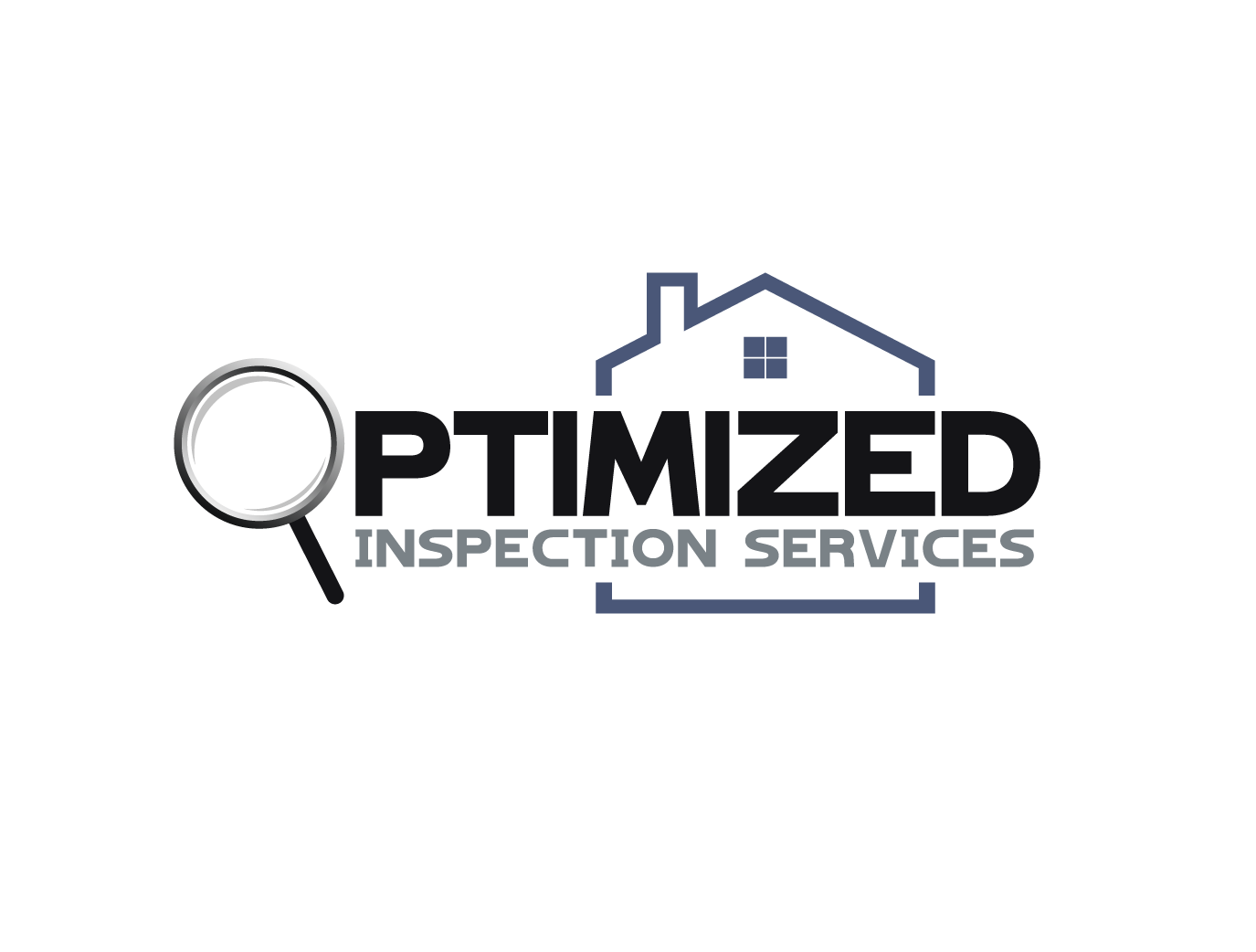
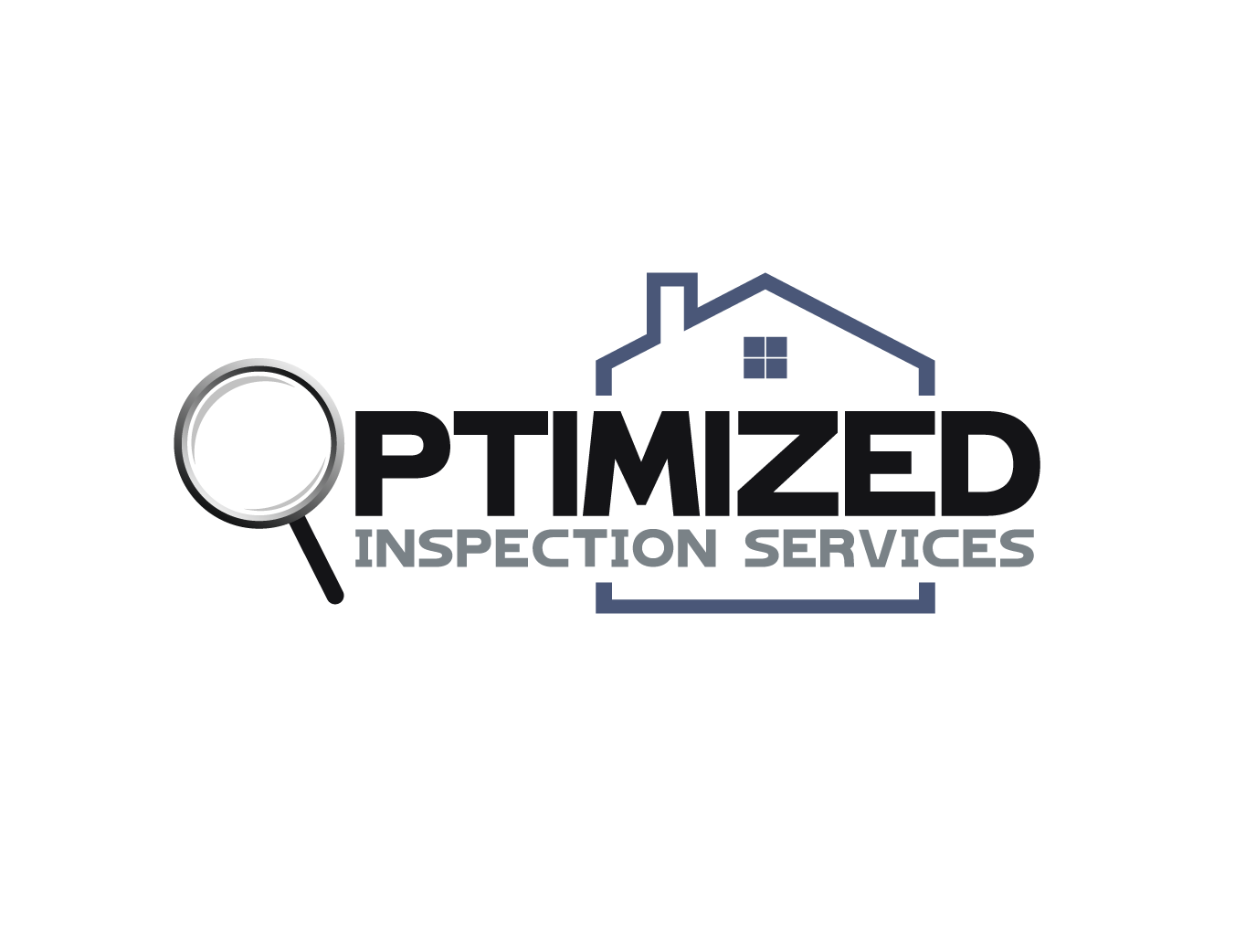
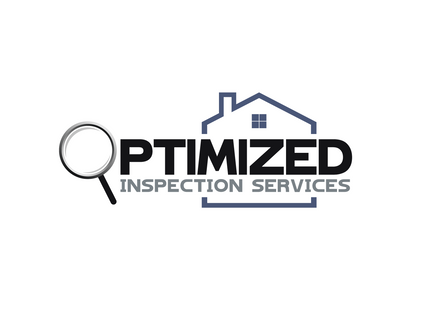

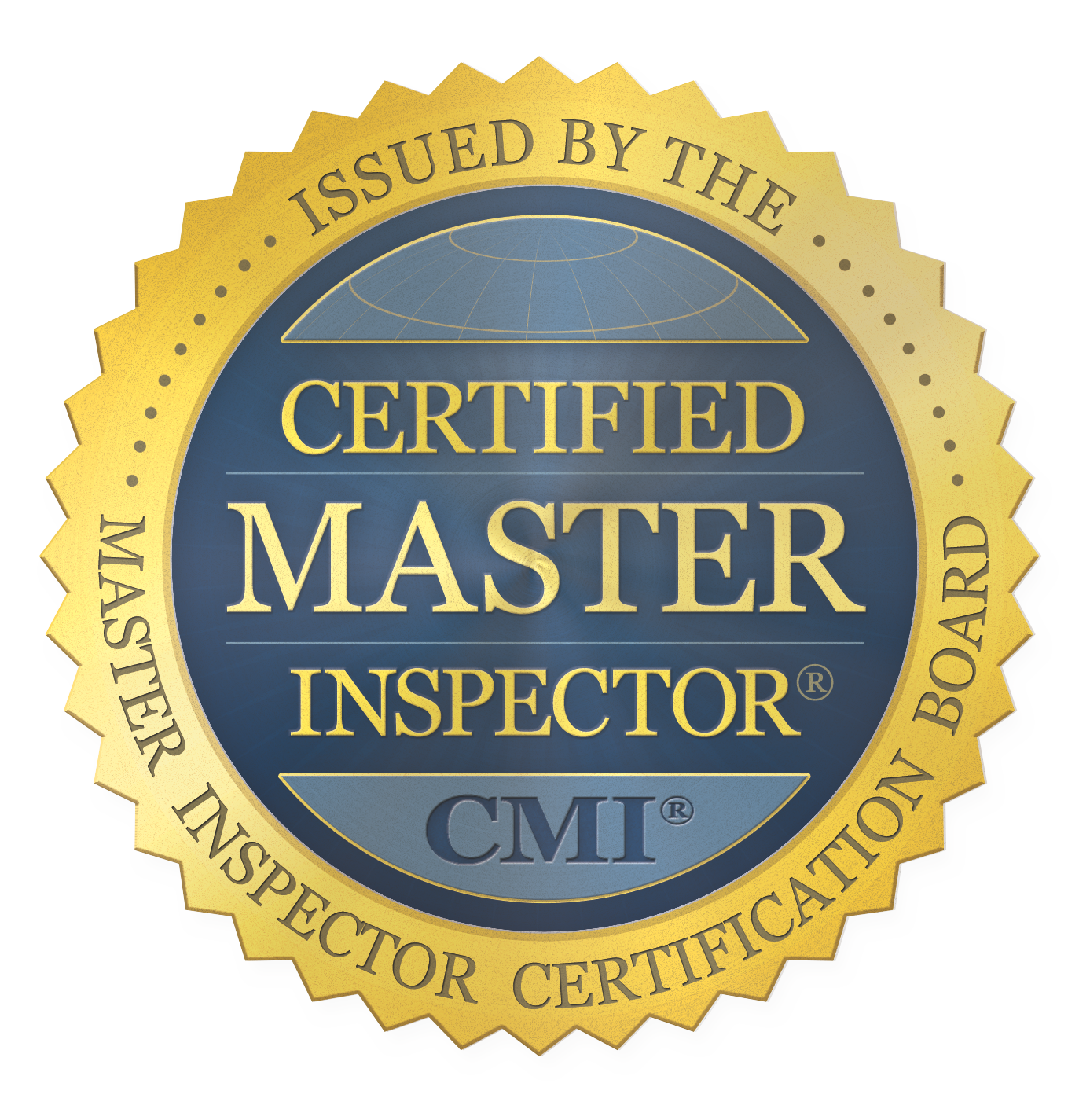

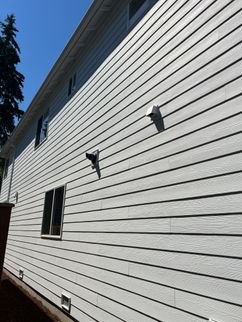
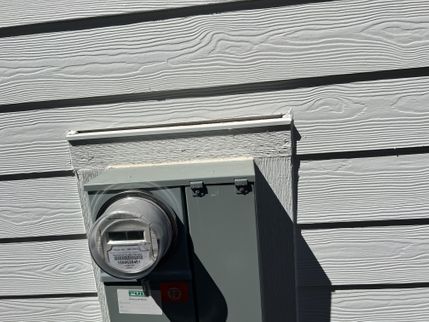
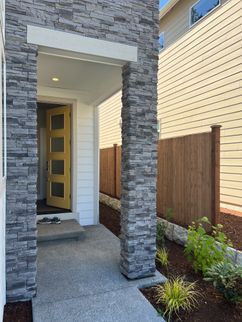
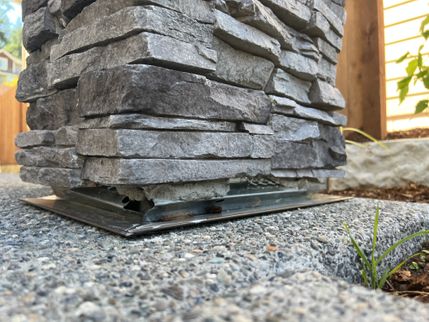
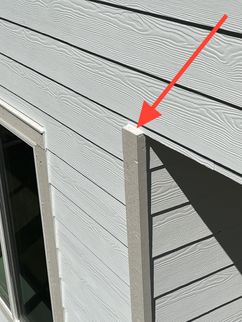
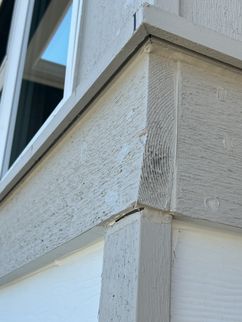
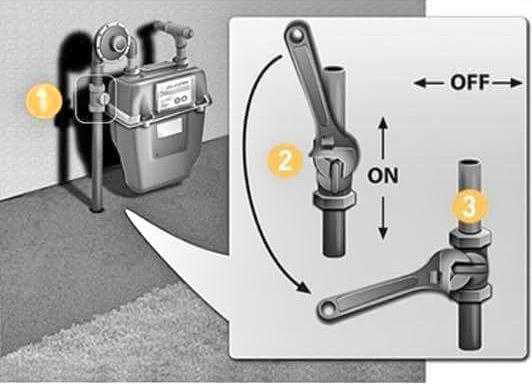
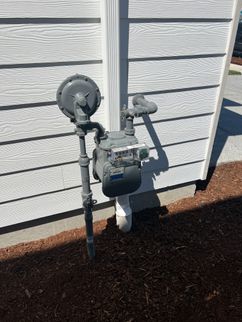
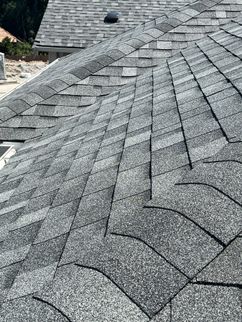
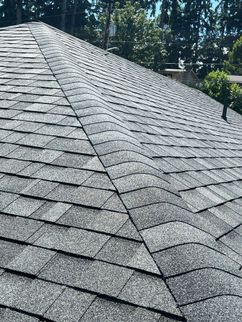
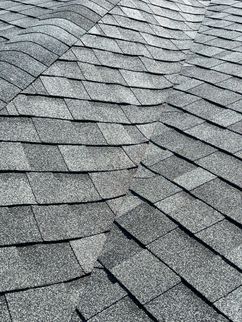
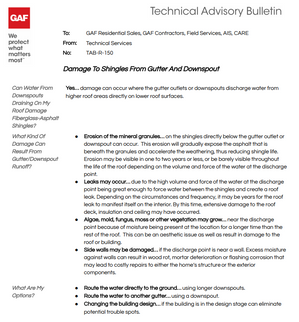
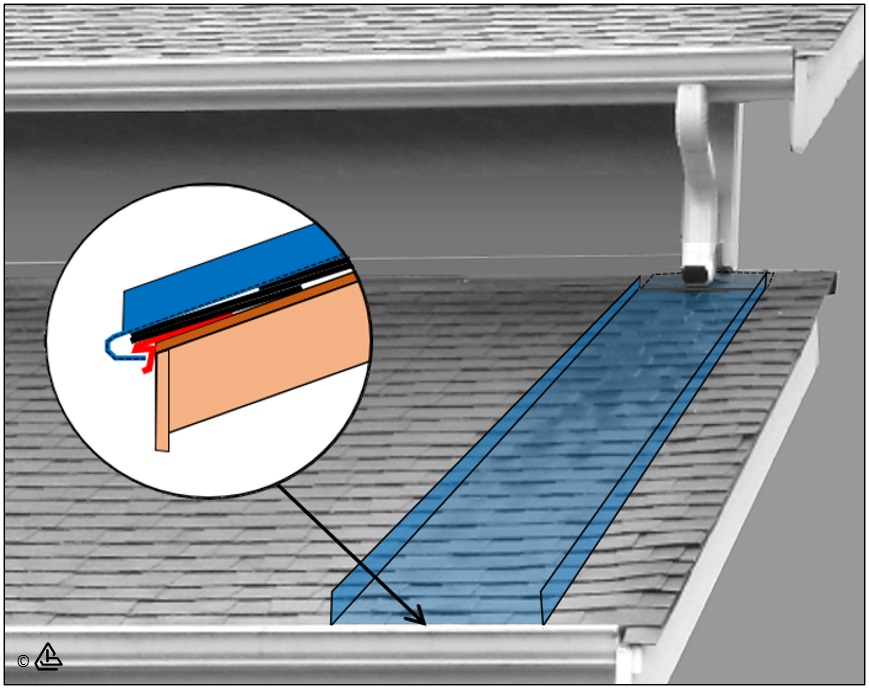
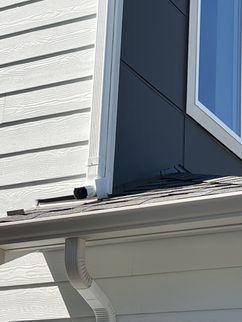
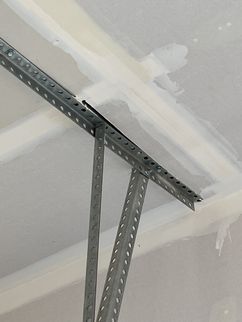
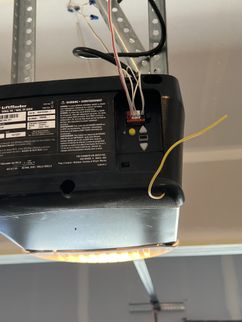
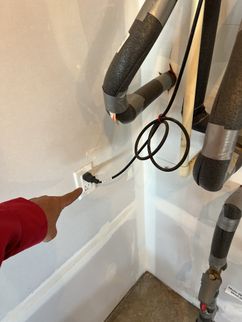
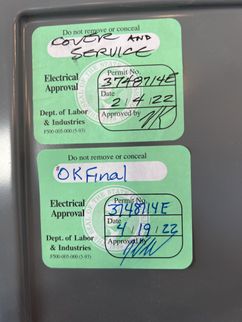
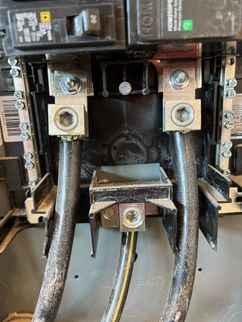
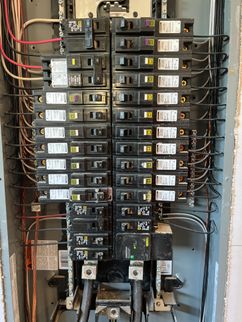
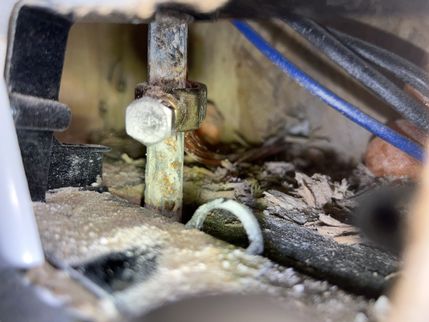
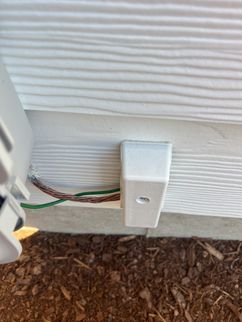
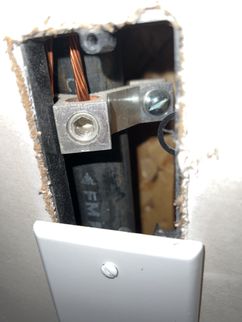
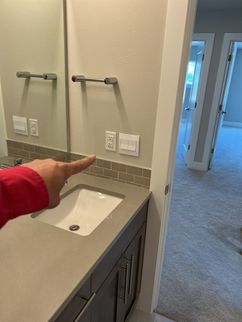
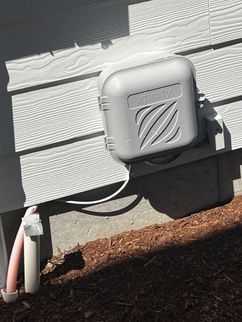
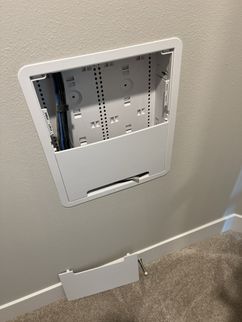
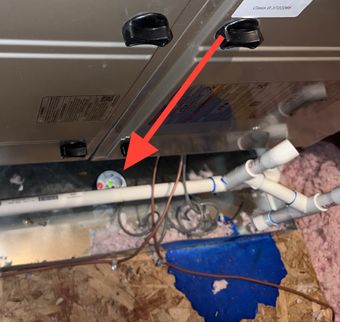
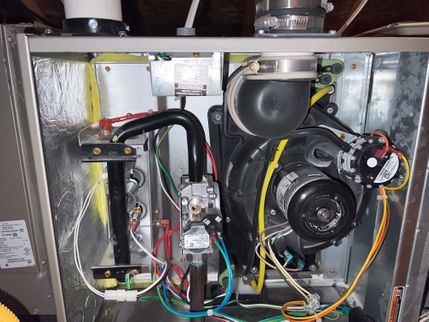
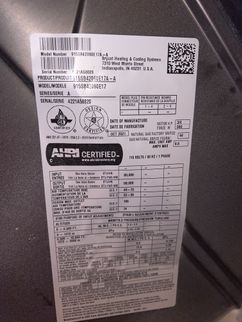
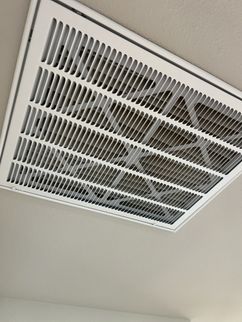
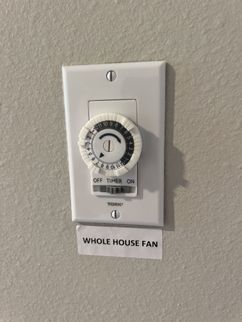
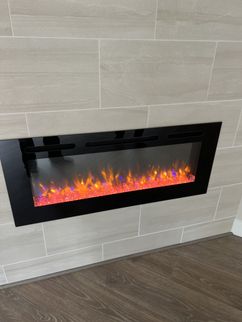
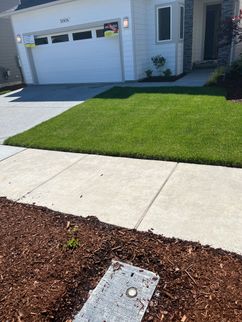
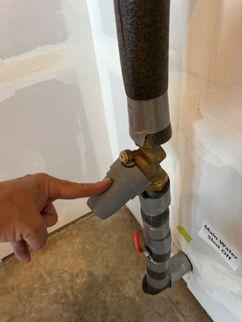
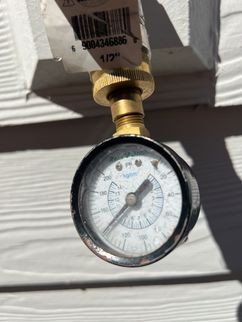
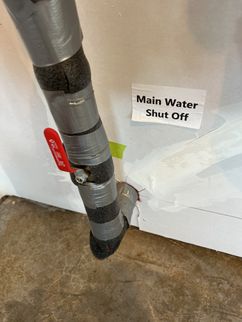
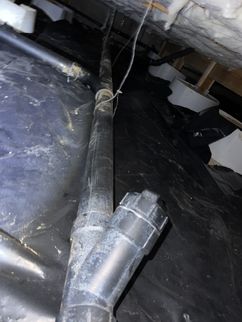
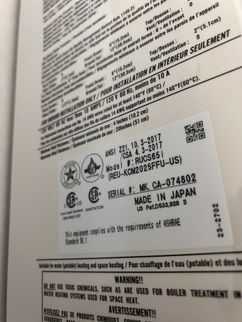
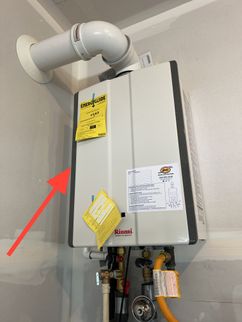
 (1) (1).jpg)
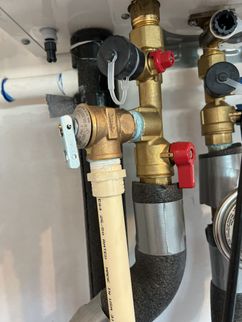
 (1) (4) (1).jpg)
